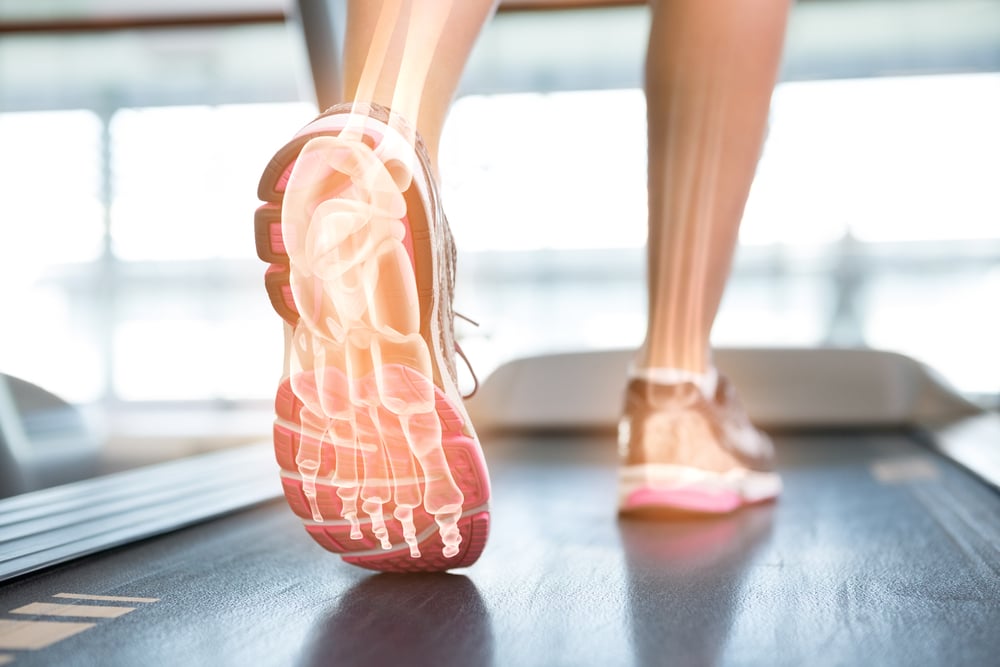When we think of the treadmill, what comes to mind first?
…Long walks, cardio-training, boring etc
The treadmill is actually a very useful tool for many reasons at the BODiWORKS Institute.
Here are five:
- The first and most obvious, is for endurance training. For improving the general ability to walk, and walk a longer period of time, and build up the ability to do so – endurance. By working on a low speed and gradually building up the pace week by week, with frequency you can increase endurance. This is to say that the heart pumps more oxygen (and aerobic metabolism), quicker, to your peripheral body parts (arms and mainly legs) than when first starting, and this makes you more efficient at using body fat during the activity for energy, thus increasing endurance.

- *To improve and correct gait issues. Gait is the ‘way we walk’ or ambulate ourselves. In gait assessment, we watch the way you walk. This shows various imbalances through the foot pattern/placement, knee joint action and hips and low back which all play a role in proper gait. Now, some walking patterns can look disturbing at first, but serve a greater purpose for that person. We may not be able to correct these completely but by using the treadmill at various speeds and elevations we can encourage a better more efficient pattern. In some cases, people experience pains while walking which can be an imbalance through their gait pattern. We can establish what these are while assessing it on the treadmill and then applying corrective exercises.
- *To increase mental focus and tolerance. These are important developmental life skills for any age individual. In particular to those with neurodevelopmental disorders, autism spectrum disorders or global delays have challenges with focus ability and tolerance for ‘not being in control’. The treadmill can be both a source of frustration and excitement. By using the treadmill as a tool for improving the ability to focus on gait patterns, consistency in forward movement while not being in control of the speed, time, or elevation offers an opportunity for the individual to see an increase by staying longer on the device. By succumbing to the effects of the constancy of movement, while relinquishing ‘control’, allows the individual to build up a tolerance and capacity to do so. Over time they can celebrate their achievements of being able to stay consistently on the
 treadmill for a longer time period without dysregulation. An important task within our Special Needs Programs.
treadmill for a longer time period without dysregulation. An important task within our Special Needs Programs. - *To improve balance. The body’s central nervous system creates balance through regular internal adjustments which increases stability. This is known as kinesthetic sense. Essentially for people as we age and people who have any sensory change/challenge require training for the central nervous system to improve balance capabilities. The treadmill is a useful tool for working on balance. We can create body adaptation with guidance and safety measures (where necessary) in order to improve balance and adaptability over time.
- *To improve lower body strength. The lower body (from toes up to pelvis) is considered your basement of your body’s structure. When it is weak, the rest is susceptible to balance and health challenges-much like a house. In order to better align and strengthen joints of the lower body, the treadmill is used for higher elevation and potentially faster pace for short spirts in order to challenge and eventually fatigue the lower body muscles. The treadmill can be used for short paced but fast feet to engage the quadricep, calf and foot muscles. This can increase strength over time using very limited time frames. Also, increasing reflex capability for any person. Those who are more compromised in the lower body due to osteoarthritis for instance, will find a gradual gain by being prescribed an exercise regime for short efforts on the treadmill.

At the BODiWORKS Institute (BI), we specialize in working with many individuals with various challenges and find the treadmill a most useful tool. The above 5 reasons are carefully prescribed at BI for each person depending on the needs and goals of the program.
*to be completed under direct individual professional guidance at BI.
